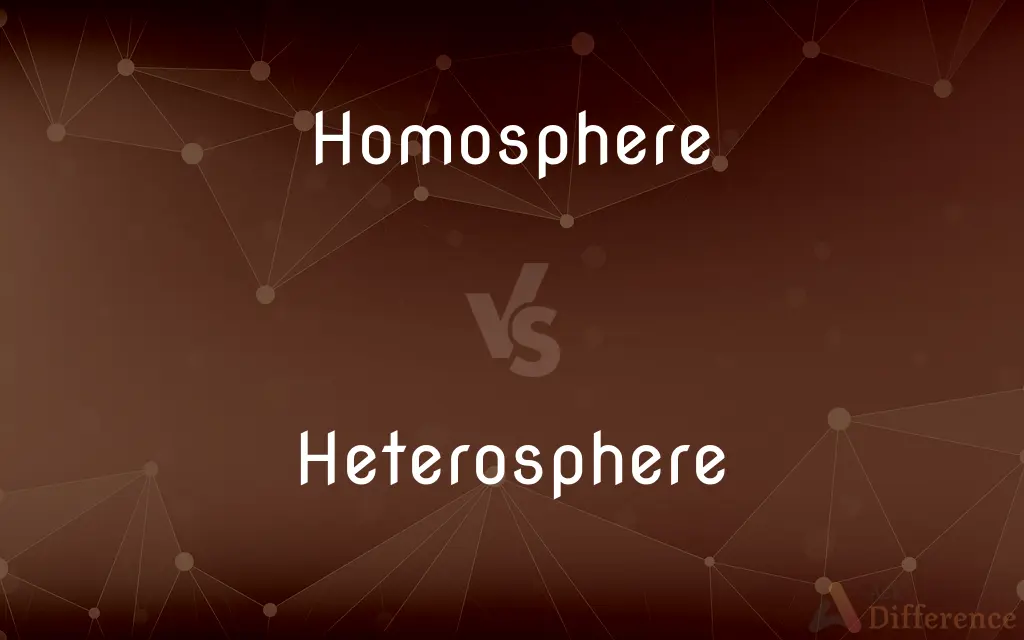Homosphere vs. Heterosphere — What's the Difference?

Difference Between Homosphere and Heterosphere
ADVERTISEMENT
Compare with Definitions
Homosphere
The homosphere is the layer of an atmosphere where the bulk gases are homogeneously mixed due to turbulent mixing or eddy diffusion. The bulk composition of the air is mostly uniform so the concentrations of molecules are the same throughout the homosphere.
Heterosphere
The heterosphere is the layer of an atmosphere where the gases are separated out by molecular diffusion with increasing altitude such that lighter species become more abundant relative to heavier species. The heavier molecules and atoms tend to be present in the lower layers of the heterosphere while the lighter ones are present higher up.
Homosphere
The lower part of the atmosphere, up to about 60 miles or 100 km, in which there is no great change in its composition.
Heterosphere
The upper part of the atmosphere, above about 60 miles or 100 km, in which there is great variation in its composition.
Share Your Discovery

Previous Comparison
Mg vs. Meq
Next Comparison
Entrepreneurship vs. Intrapreneurship














































